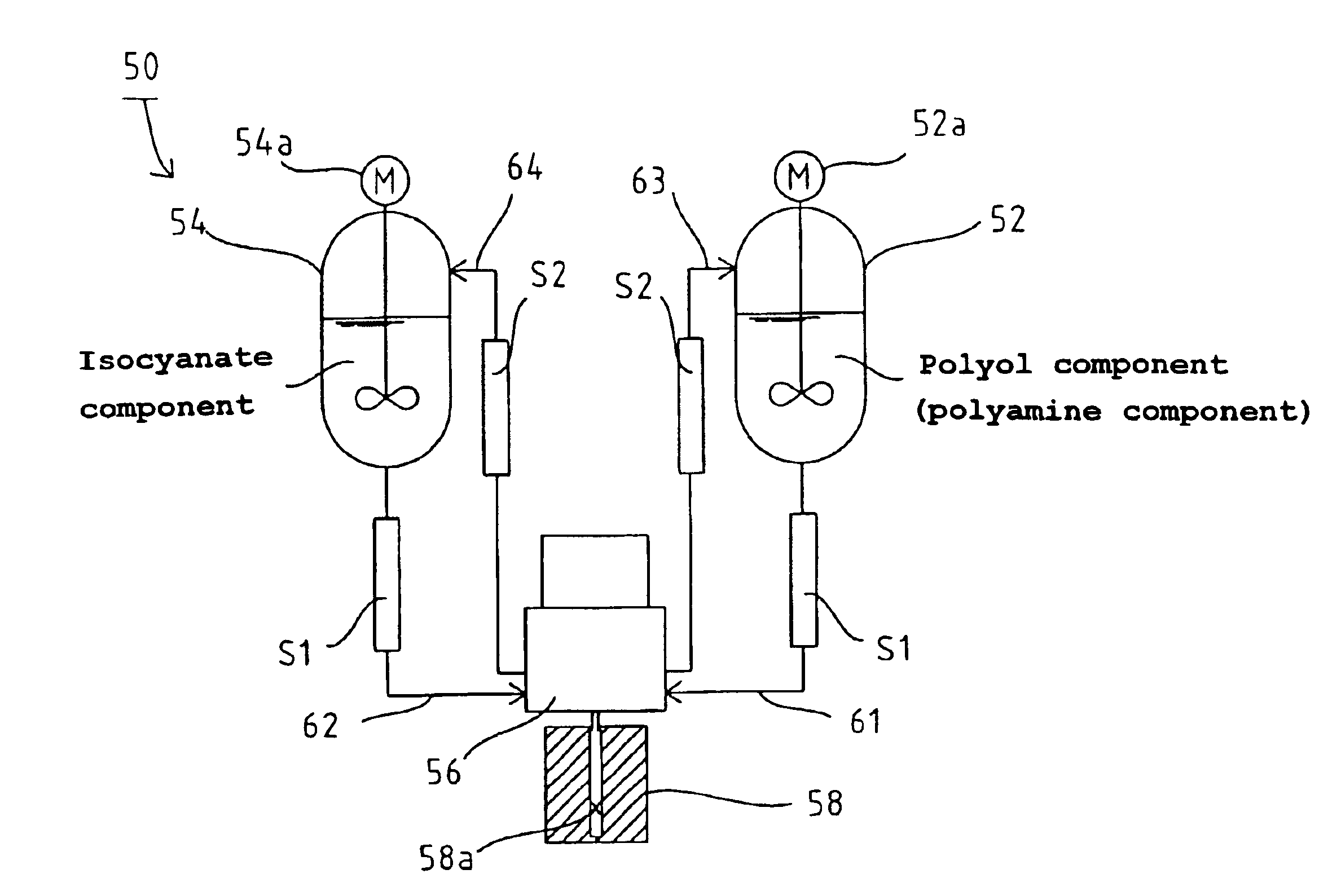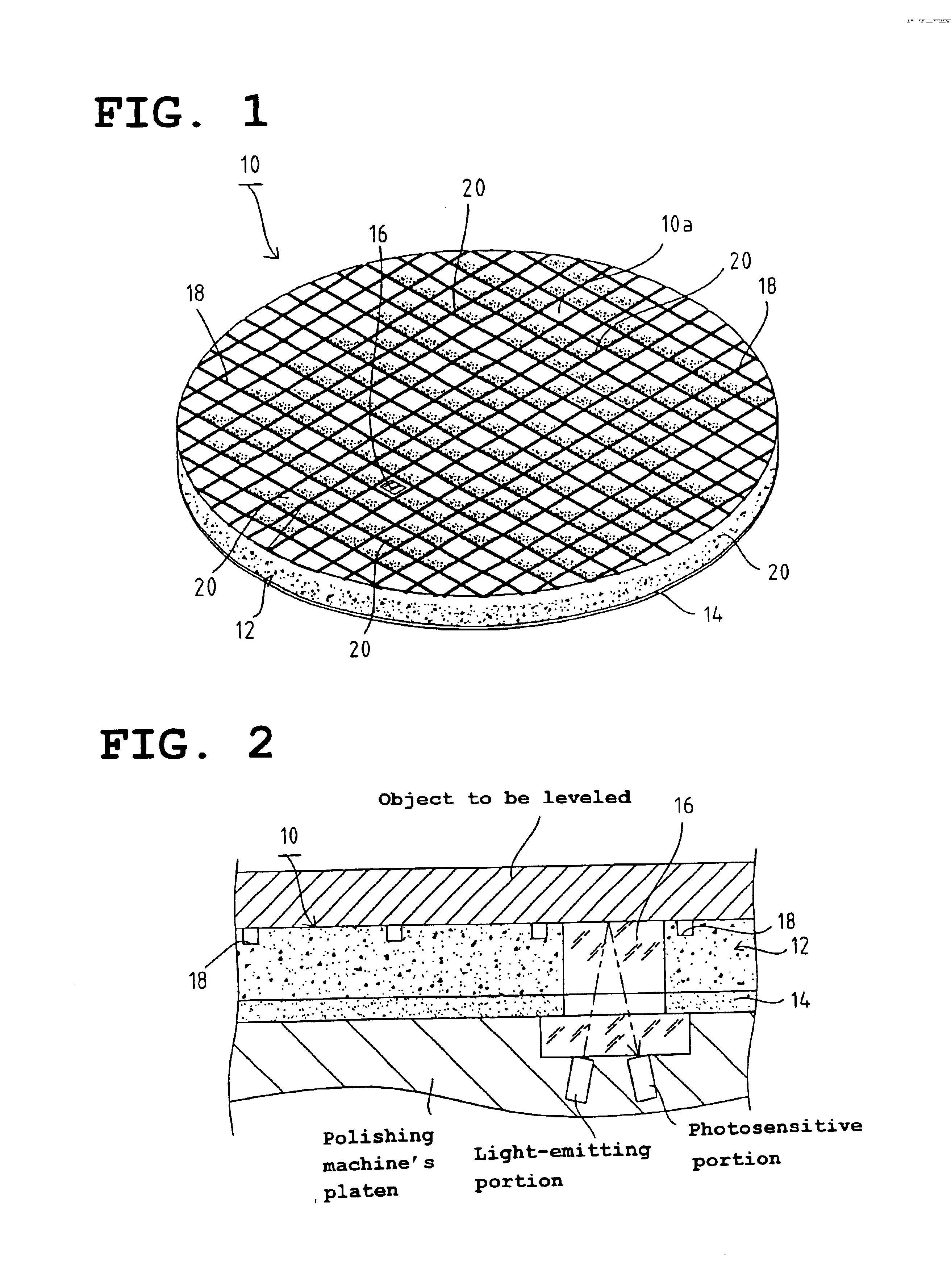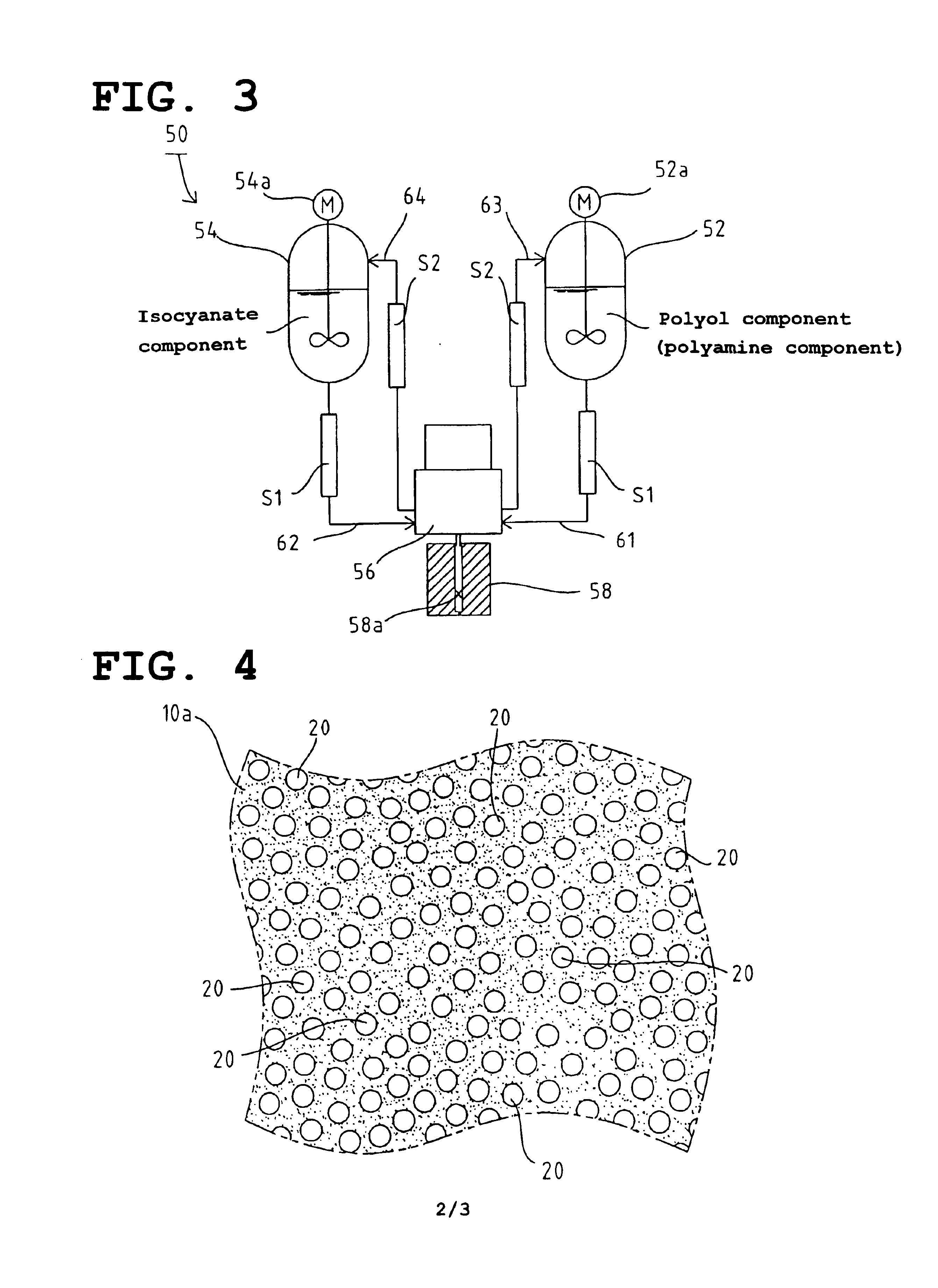Polishing pad
- Summary
- Abstract
- Description
- Claims
- Application Information
AI Technical Summary
Benefits of technology
Problems solved by technology
Method used
Image
Examples
Embodiment Construction
The polishing pad according to the invention will be further described hereinafter with reference to preferred embodiments. The inventors found that when a gas-dissolved raw material obtained by dissolving an inert gas in a polyurethane-based raw material is formed by a reaction injection molding method while arbitrarily controlling physical properties such as hardness, cell diameter and density, a polyurethane-based foam which can be preferably used as a polishing pad that is resistant to change of polishing conditions, can maintain an excellent removal rate and step height reduction. The inventors also found that the use of an aromatic diamine for example as a crosslinking agent makes it possible to inhibit the change of viscoelasticity depended on the temperature of the polyurethane-based foam.
As shown in FIG. 1, the polishing pad 10 according to the present embodiment is in the form of circular sheet and essentially comprises a polyurethane-based foam 12 constituting a polishing...
PUM
| Property | Measurement | Unit |
|---|---|---|
| Temperature | aaaaa | aaaaa |
| Temperature | aaaaa | aaaaa |
| Pressure | aaaaa | aaaaa |
Abstract
Description
Claims
Application Information
 Login to View More
Login to View More - R&D
- Intellectual Property
- Life Sciences
- Materials
- Tech Scout
- Unparalleled Data Quality
- Higher Quality Content
- 60% Fewer Hallucinations
Browse by: Latest US Patents, China's latest patents, Technical Efficacy Thesaurus, Application Domain, Technology Topic, Popular Technical Reports.
© 2025 PatSnap. All rights reserved.Legal|Privacy policy|Modern Slavery Act Transparency Statement|Sitemap|About US| Contact US: help@patsnap.com



